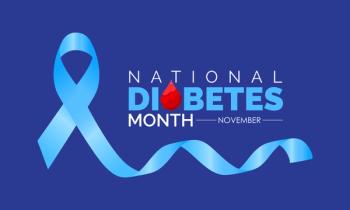
Cause, Prevalence of Pediatric Hepatitis Cases Remain Unknown
Adenovirus has been noted in some patients throughout Europe, but not among all of them so investigators are considering other potential causes and contributing factors in the hepatitis outbreak.
The CDC is continuing to work with health departments across the country to identify children with
In April, the CDC issued a
All of the patients were previously healthy and ranged in age from 1 to 6 years at the time of hospitalization. The children were from different parts of the state and no known contact or common exposures were found among the children. None of them had significant underlying medical conditions and other patients with similar illnesses are being investigated in other states.
According to the CDC, researchers are aware of an increase in pediatric patients with hepatitis of unknown cause in children recently reported in other countries. Adenovirus has been noted in some patients throughout Europe, but not among all of them, so investigators are considering other potential causes and contributing factors.
The cause of the reported illnesses is still unknown. Although adenovirus has been detected in some children, it may not be the cause of the illness. CDC officials are investigating what role other factors play in this illness, such as exposure to toxins or other infections that the children may have.
The number of cases also remains unknown, and it is not yet clear whether there has been an increase in the number of cases of hepatitis in children or improvements in detecting cases. Data from the CDC noted that it is not unusual for the cause of some hepatitis cases in children to remain unknown.
Despite these questions remaining, some answers have been found. Laboratory tests identified that some of the children had adenovirus type 41, which is more likely to cause severe stomach illness in children. Although there have been previous reports of hepatitis in children with suppressed immune systems who were infected with adenovirus, adenovirus type 41 is not a common cause of hepatitis in otherwise healthy children.
Other common causes of viral hepatitis, such as infection with hepatitis A, B, C, D, and E viruses, were considered, but evidence for these infections has not been found. Some other causes have been ruled out for the pediatric patients in Alabama, including SARS-CoV-2, bacteria, urinary tract infection, autoimmune hepatitis, and Wilson disease.
CDC officials are working with state and local health departments to identify whether there are additional pediatric patients in the United States with hepatitis, as well as potential causes for these illnesses. At this time, experts believe adenovirus could be the cause of some of these reported illnesses, but investigators are still ruling out other possible causes and identifying potential contributing factors.
The CDC is asking health care providers to consider testing for adenovirus in pediatric patients with hepatitis of unknown origin, and to report any potential causes of hepatitis to their local or state public health authorities. CDC officials are working closely with laboratories around the country to determine best testing practices and additional information will be shared through planned Clinician Outreach and Communication Activity as it becomes available.
Pharmacists can also educate parents on the symptoms of liver inflammation, which include fever, fatigue, loss of appetite, nausea, vomiting, abdominal pain, dark urine, light-colored stools, joint pain, and jaundice. Children should also be kept up-to-date on all vaccinations and can take simple daily actions to prevent disease, such as hand washing and covering coughs and sneezes.
REFERENCE
CDC. Children with Hepatitis of Unknown Cause. Reviewed May 6, 2022. Accessed May 10, 2022.
Newsletter
Stay informed on drug updates, treatment guidelines, and pharmacy practice trends—subscribe to Pharmacy Times for weekly clinical insights.


















































































































































































































